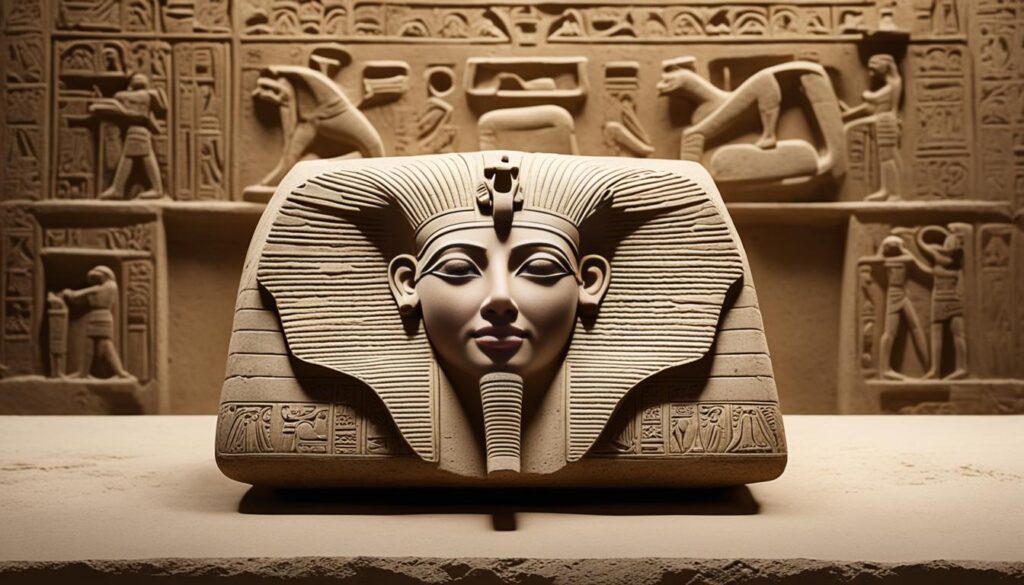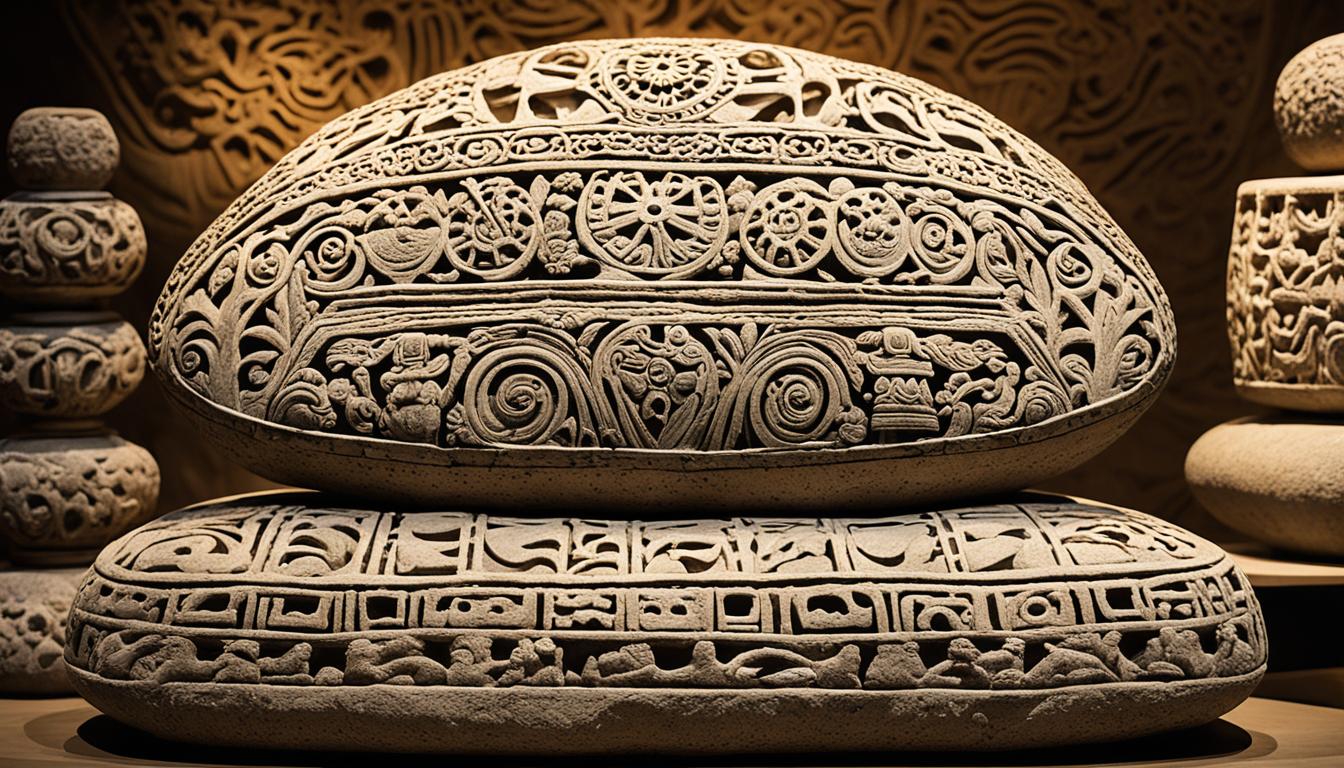Today, pillows are soft and fluffy, but ancient people used harder materials for their headrests. The first pillows were found in ancient Mesopotamia around 7000 BCE. The rich used curved stone bolsters to keep bugs away from their faces at night.
The ancient Egyptians then made headrests from wood or stone. These raised the head while sleeping. This design helped improve sleep.
In ancient China, pillows were hard and made from materials like porcelain, jade, and bronze. These pillows were thought to support the head and neck. They also helped keep hairstyles in place, improved blood flow, and even made one smarter and more moral.
Stone pillows in ancient China were for the wealthy. They were seen as symbols of status and wealth.
Using stone pillows and headrests tells us a lot about ancient beliefs on sleep, health, and social class. These hard pillows might seem tough today, but they were crucial in ancient times. They helped shape the way people slept and lived in Mesopotamia, Egypt, and China.
Key Takeaways
- The oldest known pillows were curved stone bolsters used in ancient Mesopotamia around 7000 BCE
- Ancient Egyptians developed elevated headrests made of wood or stone to raise the head during sleep
- In ancient China, hard pillows were crafted from various materials and believed to have health and intellectual benefits
- Stone pillows were often ornately decorated and served as status symbols for the wealthy in ancient civilizations
- The use of stone pillows and headrests in ancient times offers insight into their beliefs about sleep, health, and social hierarchy
Early Pillows in Mesopotamia
The first pillows came from ancient Mesopotamia around 7000 BCE. These early pillows were not soft like today’s but were curved stone bolsters. They were made to keep bugs and vermin away from the wealthy while they slept.
These pillows were carved from stone and were very expensive. They were a symbol of wealth in Mesopotamian society. Only the rich could own a pillow, which was mainly for keeping pests away, not for comfort.
These pillows were about 9,000 years old, making them some of the oldest pillows ever. Even though they weren’t comfy, they were crucial for health. They helped stop the spread of diseases, which was a big worry back then.
As time went on, pillows changed and so did their purpose. But these stone bolsters from Mesopotamia show us the early days of human sleep and comfort.
Egyptian Headrests: Elevating the Head
In ancient Egypt, pillows evolved with the use of elevated headrests. These were made from wood or stone. They had a flat base, a straight shaft, and a curved top. This design was meant to look like the sun rising, symbolizing the spiritual life of the Egyptians.

The Egyptians saw the head as sacred, the soul’s home and the spiritual center. Protecting the head was crucial, for life and afterlife. Headrests offered comfort and protection for this vital body part.
Many headrests had engravings of protective deities like Bes. Bes was thought to keep evil spirits away and bring security. These designs were more than just pretty; they helped keep the user safe in life and death.
The importance of headrests is seen in Tutankhamun’s tomb. His tomb had eight headrests, showing their key role in protecting the head for the afterlife. This highlights the deep beliefs of ancient Egypt about moving from life to the afterlife.
Stone Pillows in Ancient China
In ancient China, people used hard pillows made from materials like porcelain, jade, and wood. These pillows were thought to help with head and neck support, keep hairstyles neat, and boost blood flow. They were also believed to make one smarter and more morally upright.
The Tang (618–907 A.D) and Song (960–1279 A.D) dynasties saw a peak in ceramic pillow popularity. Artisans made them in many shapes and designs. They featured things like butterflies, flowers, and kids playing, along with sayings from Buddhism, Daoism, or Confucianism.
Hard pillows in ancient China were more than just for sleeping. They were seen as spiritual tools to keep evil spirits away. Images of lions, tigers, and dragons were common and powerful against evil.
People believed pillows could guide dreams, which were seen as signs of what the future held. This made pillows very important in daily life.
The use of stone pillows shows how ancient China mixed art, spirituality, and self-improvement. These beautiful objects did more than just support the head. They carried the values and beliefs of their creators, linking us to the past and our ongoing search for meaning.
The Evolution of Pillows in Ancient Greece and Rome
In ancient Greece and Rome, pillows changed a lot. These civilizations loved luxury and gave up hard pillows for soft ones. They wanted comfort and luxury, just like us today. The poor used cotton, straw, or reeds for pillows. The rich chose soft down and feather pillows.
Pillows became a sign of luxury in ancient Greece and Rome. People often sat on many plush pillows while eating and being lavish. This was very different from the Spartans, who lived simply and avoided comfort. They believed comfort made people weak and disobedient.
The Spartans focused on being obedient, persevering, and strong in battle. The drafting and signing of the Declaration of in the U.S. was a big event, but not related to ancient pillows.
Soft pillows became popular in ancient Greece and Rome, unlike the stone pillows used before. This change showed how values and priorities changed. Now, we have many soft pillows to choose from, thanks to ancient times.

Leave a Reply